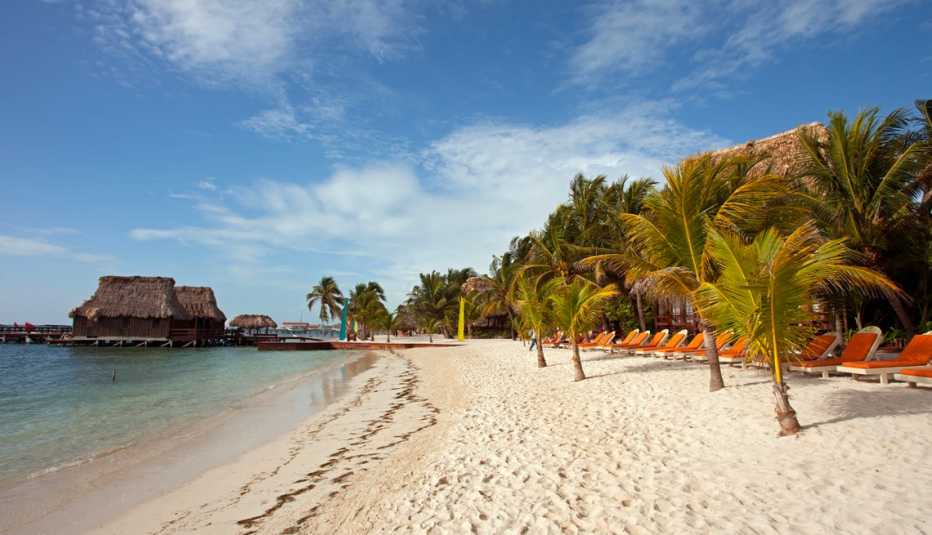Retirement in Latin America — What You Need to Know
3 min readWhen Lee and. Denise Dumont retired a few years ago, the former Northern Virginia residents found what for them was the ideal destination — Boquete, a town nestled in the highlands of western Panama.
In Boquete, they say, a nice home costs $1,500 or $1,600 a month to rent and a whole fresh pineapple can be had for $1. And then there’s the comfortable climate.
“It’s 72 degrees pretty much year-round,” says Lee Dumont, 71. “Even the Panamanians like to go to Boquete to escape the heat,” adds Denise, who will turn 69 in March. And when the couple wants a change from the mountains, they’re just a few hours from the beaches and islands of Bocas del Toro on the Caribbean side of Panama.
The Dumonts are among the many U.S. retirees who’ve relocated to Latin America, where they can stretch their dollars and find a range of climates and living situations to suit almost any taste. Some countries, such as Panama and Colombia, have sophisticated modern cities with consumer conveniences akin to those in the U.S. and Europe. Others, like Belize and Costa Rica, offer a more relaxed lifestyle amid natural wonders.
“Just saying ‘Latin America’ is easy, but each region and each country is going to be very different,” says Lief Simon, international real estate expert at Live and Invest Overseas, a company that publishes books and online guides on moving and doing business abroad.
With the rise of remote work, Michael Cobb, chief executive officer of Belize-based real estate firm ECI Development, envisions Latin America becoming an attractive spot for Americans in their 50s who want to get an early start on a retirement lifestyle. “They don’t have to wait until they’re 65,” he says. “They can move to Belize and keep doing their jobs, and they can go diving on the weekends.”
Nathan Lake, a retired registered nurse and medical website creator from the Seattle area, originally resettled in Cuenca, a city of 436,000 perched high in the Andes Mountains in Ecuador. But his desire to experience more of the Americas recently led him to embark on a year-long motorcycle trip that will take him through Peru, Bolivia, Chile, Argentina and other countries.
“I am doing a full circuit of South America,” says Lake, 66. “Even with all the traveling, I am not spending much, if any, more than my Social Security.”
Here are some of the practical details you need to know about retiring to seven popular destinations in Latin America.

Ambergris Caye, Belize
Alamy Stock Photos
Belize
Wedged between Mexico and Guatemala on the Caribbean coast, Belize is known for its beaches and the natural beauty of its forests. It’s the only nation in Central America where English is the official language.
Residency: The Qualified Retirement Program (QRP) allows expats 45 or older with at least $2,000 a month in income from Social Security, a pension or an annuity to become permanent residents. Applicants must have no criminal history, pass a government background check and stay in Belize for at least 30 consecutive days each year to maintain that status.
Buying property: Foreigners can buy real estate without restrictions, though they have to register the land transfer with the Central Bank of Belize.
Health care: American retirees in Belize can receive free care at any of the nation’s public health clinics, according to Claudette Dakers-Norales, information officer for Belize’s Ministry of Health & Wellness. There are also private hospitals, and it’s relatively easy to travel into neighboring Mexico, which has bigger medical facilities, says Mark Leonard, a former Californian who now lives in Belize.
Popular retirement destinations: Ambergris Caye, Cayo, Corozal, Placencia

Santiago, Chile
Alamy Stock Photos
Chile
Chile offers a dramatically diverse landscape of desert, coast and mountains, and a stable, well-developed economy. If you want to live in a Latin American country where the lifestyle is not unlike that of the U.S., this could be your choice.



